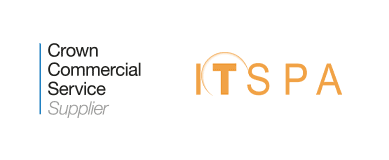The secret to improving campaign performance and profitability is understanding your current position. When you use wallboard metrics, you can clearly measure the way agents are working, you can uncover where there’s room for improvement, and take corrective action.
But which wallboard metrics are most important? How can you evaluate performance on a statistical level, and how does that information translate into action that affects your bottom line?
Available from any web browser, anywhere, our updated wallboard service gives you six key metrics in real time.
1. Call wait time
Offering the highest standards of customer service is a priority for every contact centre – and nobody likes waiting for an agent. As a result, the average amount of time that calls are left waiting is a valuable metric for assessing customer satisfaction.
If wait times get too high, you can look for ways for agents to progress through queues faster, or consider the possibility of an increased number of concurrent agents. Meanwhile, with this information available in real-time, you can take action sooner to bring wait times down to an acceptable level.
2. Average agent wait time
While high call wait times can sometimes indicate mismanaged staffing levels, the average agent wait time has a similar purpose.
If agents are left idle for a long time between calls, this is money that is being wasted. At the very least, you could repurpose those agents to spend their extended downtime more productively.
3. Average agent talk time
Once your agents are on connected calls, how long are they talking for? It’s essential that agents find a balance between progressing calls quickly and efficiently, while delivering the standards of service that your customers expect – or the sales performance you require.
Agent talk time is particularly useful when compared against sales statistics, where you can assess the relationship between time spent on a call and the ultimate outcome.
4. Sales per agent
In a targeted call centre environment, managers always need to know who is hitting their targets and who could use some additional support.
With a real-time view of sales per agent, you can find opportunities for additional training, develop appropriate incentives that push sales to the next level, and maximise revenue.
5. Total number of sales
When your calling is about sales, a quick overall perspective is consistently useful.
This is the metric that you’ll use to evaluate your entire campaign and, with the most up-to-date information, you can take action to improve performance while campaigns are still ongoing.
6. Workflow
It doesn't stop with calls. The day-to-day life of a contact centre also involves a huge range of follow-up activities, part of a wider workflow.
With the workflow metric, you can achieve the same levels of control and visibility over the tasks that occur after calling – from sending out sales packs to escalating customer complaints to the appropriate department.
As a result, you can find ways to get the best performance from every campaign and every agent, even when they’re not engaged on a call.The secret to improving campaign performance and profitability is understanding your current position. When you use wallboard metrics, you can clearly measure the way agents are working, you can uncover where there’s room for improvement, and take corrective action.
- Remote Visual Assistance
- Live Chat
- Predictive Dialer
- Cloud contact centre
- Inbound Contact Centre
- Video Contact Centre
- Avatar Dialler
- Interaction Analytics
- CX Analytics & Quality Assurance powered by AI
- AI Customer Service Agent
- IVR Payment
- Agent Assisted Payments
- VICIDial PCI-DSS Payment IVR
- Unified Communications
- SIP Trunks














